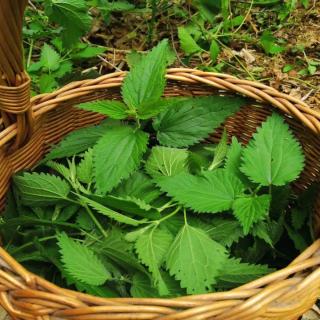

Weed tea, prepared by simply fermenting weeds in a pail, is excellent to treat plants against diseases. Here are the different types of weed tea and their uses.
Each often doubles as a very nourishing fertilizer. Each weed or plant has compounds that produce different results.
These are the main fermented teas and decoctions for:
 This is one of the most common, since it serves to fight pests and can also be used to fertilize soil thanks to its high organic matter content.
This is one of the most common, since it serves to fight pests and can also be used to fertilize soil thanks to its high organic matter content.
Discover the technique on how to prepare fermented stinging nettle tea.
The advantage of this fermented tea is that it is ready to use within 24 hours.
Here is the technique to prepare fermented rhubarb tea.
This is an excellent way to fight the spread of most fungus, especially in the vegetable patch.
Here are the steps to prepare a garlic decoction.
This is possibly the fermented tea that most organic farmers use. Comfrey indeed contains very high levels of both potassium and nitrogen, which boosts plant growth for all plants in the vegetable patch.
Here is the process to prepare fermented comfrey tea.
This tea is a powerful defense against fungus-related diseases, especially on fruit trees.
Here is the process to prepare fermented horsetail tea.
Weed tea goes through a process that other fertilizers don’t: fermentation. In a nutshell, yeasts break the plant material down very effectively – and they add their own products to the mix, too!
Weed tea thus doesn’t only rely on the special nutrients and compounds of the plant itself. It also pack in the work and nutrients of yeast as it does its work fermenting.
Which weeds grow in your area that you use to make fermented tea?
Comment below if a local weed is a true hassle for you – there are chances it’ll make an excellent weed tea!
Combine weeds to multiply their benefits. Feel free to add whatever you have at hand to the pot!
Can you make weed tea with plants that have powdery mildew on them or is the bin a must. I don’t want to spread the disease but if I can use the organic matter that would be good though will bin if I must
Hi Lisa. The fermentation won’t destroy the spores. Spraying weed tea fermented from mildewy plants would contaminate plants that are vulnerable to it. So definitely not an option for tomatoes and the like! However, if you’re good at tracking your batches and cleaning your pails, you can still recover the nutrients by fermenting it – just be careful to only spray it on non-vulnerable plants. Conifers, for instance, are completely invulnerable to the disease, so there’s no risk spraying them with a batch from diseased plants.
I made a batch of weed tea but it smelt so bad I thought it may have been toxic. Can you tell me if thats the case or is it always smelly
It can smell really foul, especially when it shifts from fermenting to rotting. Both processes are great to release nutrients from plants. Fermenting leads to more bubbles and a sour, yeast-like smell that isn’t so bad. Rotting, however, gets other much smellier bacteria going. Even though it’s very smelly, it won’t be dangerous for plants, except if drainage is very bad (sitting water for days on end), then it might trigger root rot. As for us, if you drink it you might get stomach trouble, after all, those are loads of bacteria and yeasts we’re working with here!
To make it less smelly, you can do the following:
– aerate the mix as often as possible: add a bubbler, mix often, or pour from one bucket to an empty one to make sure lots of air gets mixed in – every day.
– start it with a yeast trigger: organic, non-pasteurized beer, yoghurt or kombucha.
– keep it in the shade since too much heat would kill yeasts while not disturbing smelly bacteria.
– if day and night-time temperatures are very different, it helps to stack styrofoam or insulation around the pail to make sure temperatures stay constant as much as possible.
It isn’t very easy to keep it frothy, bubbly and fermenting. However, once you strike a good rhythm, with a nice fermentation, you can simply add fresh weed material in the pail from time to time. Take a few laddles of fertilizer out, pour a few laddles of rainwater back, and you’ve got a perpetual supply of yeasty-smelling fertilizer going! Here is a page on why fermented tea works so well.
Good tips to get rid of the smell are using soap, toothpaste or lemon rinds. It’s true that the smell is hard to get rid of!
I’m very interested in fermenting weed tea for my vegetable & flower garden. I live in Central Texas near Austin. Are there other weeds in my area that you would recommend for this tea?
My, oh, my! There are more weeds to use than you would dream of! Each at the very least boosts nitrogen, but some excel at drawing good minerals out from deeper soil. For instance, wild carrot (Daucus carota) and dandelion (Taraxacum officinale) do great at this. Even better if you can pull out the roots to ferment them, too. Weeds that run along the ground have similar properties to that of fermented grass: a strong nitrogen boost that helps everything grow from veggies to leaf and flower ornamentals. So you can go ahead and ferment that running chickweed, henbit and those sticky cleavers (the velcro plant). Which plants are growing most in your garden?